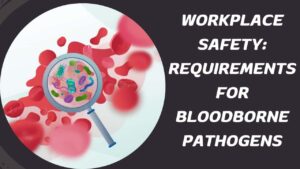Understanding the Central Focus of the OSHA Bloodborne Pathogens Standard
Introduction
The Occupational Safety and Health Administration (OSHA) Bloodborne Pathogens Standard is a vital regulation aimed at safeguarding the health and safety of workers who may be exposed to bloodborne pathogens in the workplace. This comprehensive standard outlines specific requirements that employers must follow to prevent occupational exposure and protect their employees from the risks associated with bloodborne diseases.
Protecting Workers from Bloodborne Pathogens
Scope of the Standard
The OSHA Bloodborne Pathogens Standard applies to all employers whose workers have occupational exposure to blood or other potentially infectious materials (OPIM). This includes healthcare workers, laboratory personnel, first responders, and other individuals who may come into contact with blood or OPIM as part of their job duties.
Identification of Hazards
The central focus of the standard is to identify and mitigate the hazards associated with bloodborne pathogens, including hepatitis B virus (HBV), hepatitis C virus (HCV), and human immunodeficiency virus (HIV). These pathogens can be transmitted through contact with infected blood or OPIM, posing a significant risk to workers’ health if proper precautions are not taken.
Key Requirements of the Standard
Exposure Control Plan
One of the primary requirements of the OSHA Bloodborne Pathogens Standard is the development and implementation of an exposure control plan. This plan outlines the specific measures that employers will take to minimize the risk of occupational exposure to bloodborne pathogens. It includes procedures for identifying tasks and job positions with potential exposure, methods of compliance with safety protocols, and protocols for incident management.
Training and Education
Employers are required to provide comprehensive training to employees who may be at risk of occupational exposure to bloodborne pathogens. This training covers topics such as the risks associated with exposure, preventive measures, proper use of personal protective equipment (PPE), emergency response procedures, and incident reporting protocols. Training should be provided initially upon hire and regularly thereafter to ensure ongoing compliance.
Use of Personal Protective Equipment (PPE)
The standard mandates the use of appropriate PPE to protect workers from exposure to bloodborne pathogens. This includes gloves, gowns, face shields, and other protective clothing or equipment that can minimize the risk of exposure. Employers are responsible for ensuring that PPE is readily available, properly fitted, and used correctly by employees.
Hepatitis B Vaccination Program
Employers must offer the hepatitis B vaccine series to employees who have occupational exposure to blood or OPIM at no cost to the employee. Vaccination should be offered within a specified timeframe after initial assignment to tasks involving exposure. Employers are also required to provide follow-up testing to ensure immunity and offer booster doses as needed.
Post-Exposure Evaluation and Follow-Up
In the event of an exposure incident, employers are required to provide prompt medical evaluation and follow-up to affected employees. This includes documenting the incident, assessing the risk of infection, and providing appropriate medical care and counseling. Employees should be informed of their rights and responsibilities regarding post-exposure evaluation and follow-up.
Conclusion
In conclusion, the OSHA Bloodborne Pathogens Standard plays a critical role in protecting workers from the risks associated with occupational exposure to bloodborne pathogens. By implementing comprehensive measures to identify and mitigate hazards, providing training and education to employees, ensuring the use of appropriate PPE, offering vaccination programs, and providing post-exposure evaluation and follow-up, employers can create safer workplaces and minimize the risk of bloodborne infections among their workforce. Compliance with the standard is essential for promoting worker health and safety and reducing the incidence of occupational exposure incidents.



